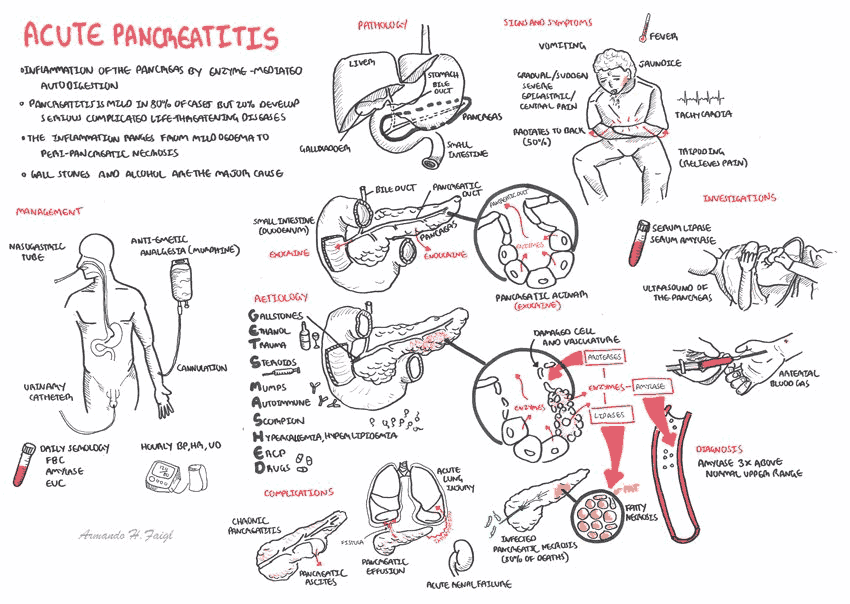The Critical Hours That Decide Sepsis Outcomes
Sepsis is one of those conditions that doesn’t wait. It turns routine infections into system-wide emergencies, often before the team even finishes the initial workup...
Sepsis is one of those conditions that doesn’t wait. It turns routine infections into system-wide emergencies, often before the team even finishes the initial workup...
Loss of consciousness may be transient (syncope) or ongoing (coma). Many patients are admitted to hospital with "collapse".
Work-up for abdominal pain begins with resuscitation and exclusion of critical diagnoses. Then, through a detailed history and physical, consider all the causes of abdominal pain...

In patients with typical symptoms and diagnostic laboratory tests, CT or MR imaging is not required to confirm the diagnosis of acute pancreatitis. CT or MR imaging are primarily used to detect complications of acute pancreatitis...
In adults, by far and away the most common foreign body ingestion is a meat bolus impacting a preexisting anatomic structure. In children, the most common foreign body ingestion are coins.
Serious ingestions can immediately result in perforation, shock, and even death. Intentional ingestions in adults tend to have more serious consequences. Long-term complications can lead to strictures and an increased risk of esophageal cancer.
Boerhaave syndrome is a spontaneous rupture of the esophagus. It usually results from barotrauma related to retching or any sudden increase in intraabdominal pressure against a closed glottis.
In the ED patient with syncope, the ECG should be scrutinized for signs of ischemia, bradydysrhythmias, tachydysrhythmias, and conduction delays. Critical diagnoses to consider that can be detected with the ECG include: Brugada syndrome, Long or short QT syndromes ...
Shortness of breath (dyspnea) is the subjective sensation of breathlessness which is excessive for any given level of activity. It is important to remember that any component of the respiratory system can cause dyspnea.
Diuretics may not be the preferred initial therapy, however, for those patients with vascular failure, who are often euvolemic, or those with cardiogenic shock, who are often hypovolemic. In these patients, the emergency provider should first optimize preload and afterload reduction with the use of noninvasive positive pressure ventilation (NPPV), nitrates, or inotropes as indicated.